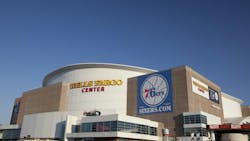3 Things Most People Don’t Understand About Facility Management – And Why Cleaning Smarter Is at the Heart of It
Facility managers are the unsung heroes behind the seamless operation of our public spaces. While the term “facility management” might conjure images of maintenance checklists or HVAC systems, the reality is far more complex—and far more impactful.
To better understand the evolving role of facility managers, my team connected with two facility managers at world-class facilities, the Wells Fargo Center (WFC) in Philadelphia and Gathering Place Public Park in Tulsa, Oklahoma. Let’s dive into three commonly misunderstood aspects of facility management—and how smarter cleaning strategies are transforming the profession from the ground up.
1. Facility Management Is About the People a Place Seeks to Serve
Facility managers are often seen as behind-the-scenes operators, but their work directly shapes the experiences of every visitor, employee, and guest. At Wells Fargo Center, which hosts over 200 events annually, Senior Director of Operations Ryan Hemenway puts it simply: “We can’t control whether the team wins, or if the artist has an outstanding show, but we can control the environment and experience at all the touchpoints—from security to guest services to concessions and restrooms,” he says. “We want guests to go home with a great memory, like their team coming back from a tough first half, or a fun princesses-on-ice show with their family—not cold hot dogs or filthy restrooms.”
This people-first mindset is echoed at Gathering Place, which recently was recognized by the International Sanitary Supply Association (ISSA) in its Spotless Spaces competition. Julio Badin, Executive Director at Gathering Place, emphasizes that “any community member can go there and get the same experience. Irrespective of what your lot in life is—we can all enjoy it in the same way, together.” For Julio and his team, cleanliness and inclusivity go hand in hand, from the park’s adult changing tables to its meticulous attention to detail. The team makes accommodating sensory sensitivities a priority, using low-fragrance supplies and ensuring that changing areas and event spaces remain spotless and accessible for guests with special needs.
2. Driving Efficiency Isn’t About Cutting Corners—It’s About Doing the Right Things Right
One of the biggest misconceptions about facility management is that efficiency means doing less. In reality, it means doing the right things better. At Wells Fargo Center, the implementation of data-driven cleaning tools has allowed staff to make better use of their time by reallocating time from routine checks to more detailed, guest-focused tasks.
“Instead of asking staff to check all dispensers—which is extremely daunting, as we have about 11,000 in the facility—we only need to check half of them,” explains Daniel Weber, Director of Facilities. “That time is now spent on detailed cleaning—urinals, mirrors, hard-to-reach areas. When a fan walks in, it feels really clean.”
This type of technological implementation, paired with the appropriate washroom solutions, has also improved staff well-being. Previously, overnight teams would push heavy carts filled with paper towels, toilet paper, and soap items to name a few, assuming every restroom needed to be full restocking. Now, with the visibility we have on dispenser refill levels the team has visibility on the items they need to refill and thus put on the cart—reducing physical strain and more efficient allocation of hygiene products.
3. Innovation in Facility Management Is as Much About Culture as It Is About Technology
While smart sensors and automation tools are transforming the field, the real innovation lies in how facility managers think. At Wells Fargo Center, every decision is weighed against environmental stewardship and guest experience. “We’re not just implementing new tech,” says Hemenway. “We’re finding smarter, more sustainable ways to do the job.”
This mindset is part of a broader cultural shift. Facility managers today are expected to be collaborators, strategists, and even educators. “When you tell someone you work in facility management, they think you fix things,” says Hemenway. “But we run the back-of-house team that makes events happen. We’re managing a million-square-foot facility that operates 24/7.”
At Gathering Place, that culture of excellence is palpable. “A key tenet of being world-class is the presentation of the park,” says Badin. “When you go above and beyond, it matters—and people take notice.” The park encourages a “see something, say something” culture, allowing team members from every department to play an active role in maintaining the park’s safety and cleanliness by reporting anything that falls short.
Why It All Comes Back to Cleaning
Whether it’s a concert venue, a public park, or a corporate campus, one truth remains: the guest experience begins and ends with cleanliness. “No one emails to say the building looks super clean,” says Weber. “But they will tell you if the seat was dirty or the restroom was filthy.”
That’s why smarter cleaning isn’t just a trend—it’s a cornerstone of modern facility management. It supports sustainability, enhances guest satisfaction, and empowers staff to focus on what really matters.
Let’s take a moment to recognize the unsung heroes who make our shared spaces safer, cleaner, and more welcoming. Because when facility managers succeed, we all benefit—from the first impression to the lasting memory.
About the Author
Katrin Ferge
Katrin “Kat” Ferge is the North American Regional Marketing Manager for Professional Hygiene – Commercial segment at Essity. In her role, she is focused on Essity’s professional hygiene brand Tork and helping businesses including office buildings, recreational facilities, passenger terminals and educational institutions leverage better hygiene for better business performance. She has more than 15 years of experience in brand communications and marketing. Kat received her bachelor’s degree from Ludwigshafen University of Business and Society in Germany and later received her MBA from the Thunderbird School of Global Management at Arizona State University.
